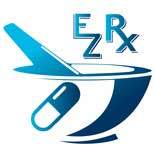The Affordable Care Act requires all health plans sold directly to individuals or through small employers to cover prescription medications. All health plans usually come with insurance coverage but not every plan covers every medication. And within a plan too, your copays will vary, depending upon the medication chosen. It is important to know about your plan’s coverage to avoid over paying for your medications.
Before deciding on a health insurance plan, ask for its formulary which is a list of medications that are covered by the plan, and also it will provide the guidelines on your copays. You can check your plan’s formulary on its website, or also ask your insurer to send you a copy.
Formularies usually have drug tiers or groups of drugs that are classified as per their costs. These include:
Tier 1:
These are the least expensive medications and typically limited to generic medications.
Tier 2:
This includes more expensive generic drugs and brand-name drugs that are termed as “preferred” by your plan. The tier contains the most affordable brand-name drugs.
Tier 3:
It contains the non-preferred and expensive brand-name medications, and you will have to pay a significant amount as out-of-pocket expenses for the medications in this tier.
Tier 4:
This contains most expensive medications that are needed for rare and life-threatening conditions.
The tiers may differ from plan-to-plan, as not all insurances have the same number of tiers or have the same drug in the same tier. Your copayment for a medication will depend on its tier or coverage status preferred or non-preferred.



